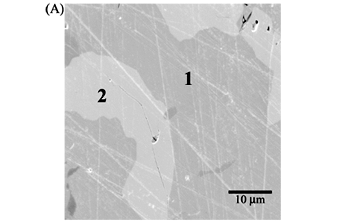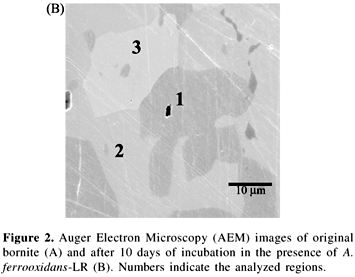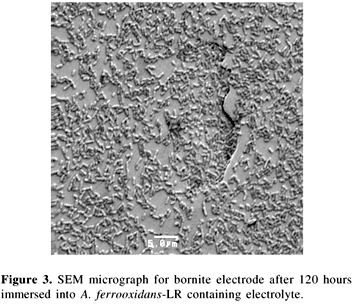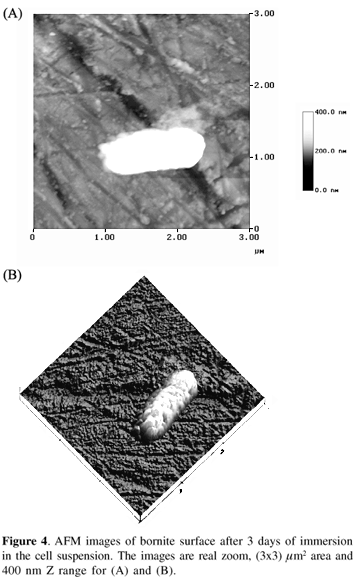Bornite electrodes were characterized in the absence or in the presence of Acidithiobacillus ferrooxidans, which is an important microorganism involved in metal bioleaching processes. The presence of the bacterium modified the mineral/electrolyte interface, increasing the corrosion rate, as revealed by interferometric, AEM, ICP and EIS analyses. As a consequence of bacterial activity the electrode became porous, increasing its surface heterogeneity. This behavior was correlated with the evolution of impedance diagrams obtained during the time course of experiments. The main difference in these diagrams was the presence of an inductive feature (up to 44 h), which was related to bacterial action on the mineral dissolution, better than to its adhesion on the bornite. The total real impedance measured in presence of the bacterium was about 10 times lower than in its absence, due to the acceleration of the mineral dissolution, because an oxidant environment was maintained.
Acidithiobacillus ferrooxidans; electrochemical impedance spectroscopy (EIS); bornite












